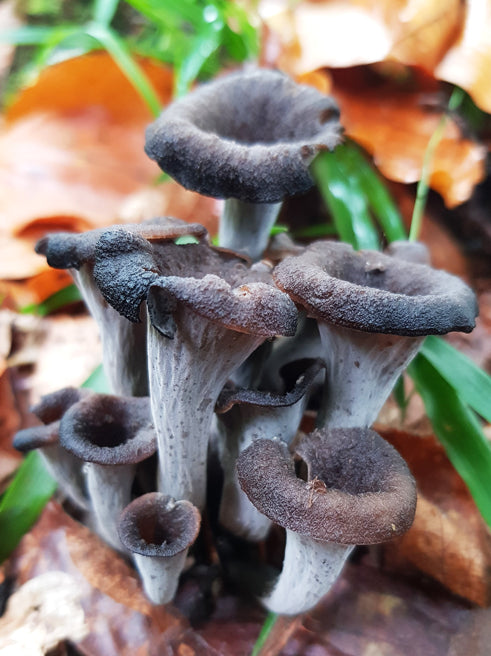Wild Mushroom Food Safety Certification - GEORGIA - AUG 23-24, 2025
Wild Mushroom Food Safety Certification - GEORGIA - AUG 23-24, 2025
Couldn't load pickup availability
This 5 year mushroom foraging permit meets the criteria required by the state health departments and formally approved for the foraging and selling of wild mushrooms in the following 8 states: South Carolina, North Carolina, Georgia, Virginia, Alabama, Pennsylvania, New York, Rhode Island. Signups will receive a study guide and slides 1 month ahead of the class. Exam will be taken in person on Sunday, August 13, 2023.
Limited to 40 people, and no refunds will be available for this event. We might be able to move you to another class in case of emergency.
Where: Wahsega 4-H Center, 77 Clover Leaf Trail, Dahlonega, GA 30533
Accomodations: Click Here
Food: Please bring your own lunch
Wahsega 4-H Center is one of five centers operated by the University of Georgia Cooperative Extension. We provide environmental and outdoor education opportunities during the school year and camping experiences to youth during the summer. Our programs enable youth to acquire relevant knowledge, develop significant life skills and form the appropriate attitudes they need to make intelligent decisions, solve problems and be responsible citizens.
When: AUG 23-24, 2025, 9am-5pm
Taught personally by Brian Hale. This permit may be valid in other states that have adopted a Code 13 policy, your state will need to contact us to evaluate and approve this permit for your state’s food safety authority.
According to state law, wild foraged mushrooms species must be individually inspected and found to be safe by an approved mushroom identification expert that:
(A) Has met the requirements of knowledge and passed an exam and
(B) Will harvest only those mushrooms species listed below (Check the Approved Species List for your state’s allowed species) :
- Chanterelles (Cantharellus spp. Exception C. persicinus)
- Blue chanterelle (Polyozellus multiplex)
- Morels (Morchella spp.)
- Black trumpet (Craterellus fallax)
- Lobster (Hypomyces lactifluorum)
- Wood ears (Auricularia spp.)
- Chicken of the woods (Laetiporus spp. Exception L. persicinus)
- Beefsteak (Fistulina hepatica)
- Hedgehog (Hydnum repandum, H. albomagnum)
- Lions mane / Pom Pom / Bearded tooth / Bear’s head (Hericium spp.)
- Oyster mushroom (Pleurotus spp. Exception Pleurotus levis, P. dryinus)
- Cauliflower (Sparassis spp.)
- Maitake / Hen of the woods (Grifola frondosa)
- Blewit (Lepista nuda)
- Honey mushroom (Armillaria mellea, A. tabescens)
- Blue milky (Lactarius indigo)
- Golden and burgundy milkies (Lactarius corrugis, L.volemus, L. hygrophoroides)
- Pecan truffle (Tuber spp.)
- Puffballs (Lycoperdon spp., Calvatia spp.)
- Bolete species: King bolete / Cep / Porcini (Boletus edulis, B. chippewaensis)
- Chaga (Inonotus obliquus)
- Reishi mushrooms (Ganoderma curtisii, G. tsugae, G. sessile)
- Turkey tail (Trametes versicolor)
- Matsutake (Tricholoma magnivelare)
- Shaggy mane (Coprinus comatus)
- Candycap mushroom (Lactarius rubidus, L. fragilis, L. camphoratus)
- Saffron milky (Lactarius deliciosus)
- Hawk’s wing (Sarcodon imbricatus)
- Enoki (Flammulina velutipes)
- Shrimp Russula (Russula xerampelina)
- Umbrella Polypore (Cladomeris umbellata)
- Green Quilted Russula (Russula virescens, Russula parvovirescens, Russula crustosa)


